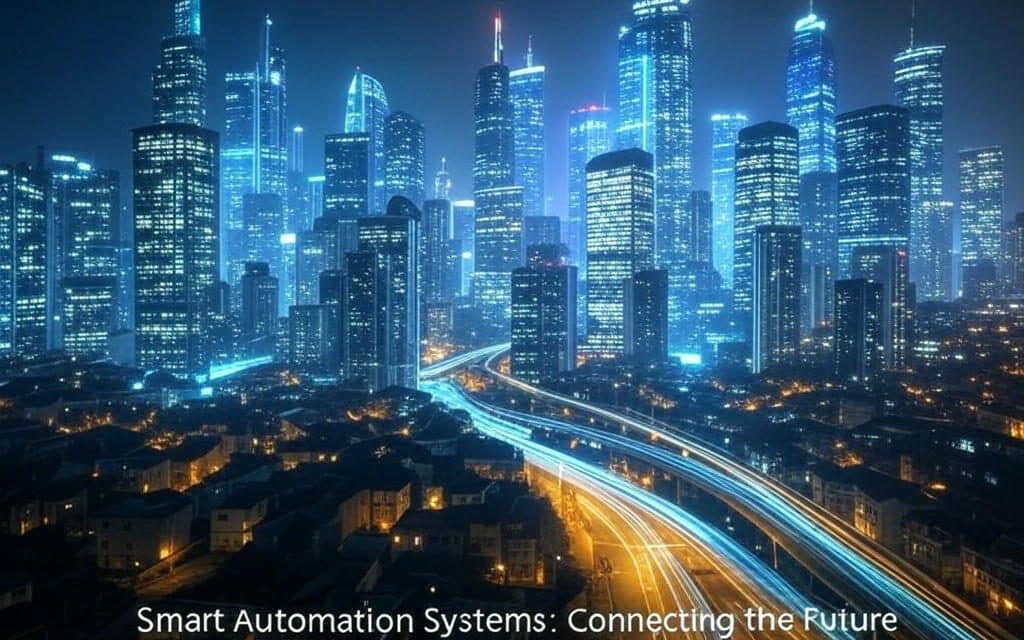Smart automation is transforming industries—imagine systems connecting your home devices to factory machines, all for efficiency without effort. These smart automation foundations offer 3 core insights for tech leaders and decision-makers, building a blueprint for innovation. This guide explores fundamental principles, historical progression, and interdisciplinary connections shaping modern smart automation, perfect for business and technical minds.
Whether you’re a business leader seeking innovation or a tech manager planning smarter systems, smart automation provides the core framework you need. We’ll uncover how these foundations evolved, why they matter, and how they connect across disciplines, including IoT integration. Ready to dive into smart automation? Let’s start with the basics and see how they drive today’s tech (0.1.1). It’s simple, engaging, and built for you—stick around!
Smart Automation Foundations Unveiled
0.1.1: Core Concepts of Smart Automation Systems
Smart automation starts with core concepts—simple ideas powering complex systems. It’s about devices talking, like your phone syncing with a thermostat, to work seamlessly. Sensors detect a dark room, or schedules manage lights, forming automation’s foundation.
These basics are easy to grasp, even for tech leaders. They connect homes, offices, and factories, driving efficiency. Curious about smart automation’s building blocks? Check 0.1.1. It’s the starting point for understanding modern systems.
0.1.2: Historical Evolution of Smart Automation
Smart automation’s history traces back decades, evolving from basic switches to today’s smart tech. Early systems automated factories, while home tech like thermostats grew smarter over time. This evolution shaped modern automation’s current form.
For tech leaders, understanding this progression reveals innovation patterns. It started simple, but interdisciplinary advances—engineering, IT—pushed smart automation forward. Want the timeline? See 0.1.2. It’s a journey worth exploring.
0.1.3: Internet of Things in Smart Environments
Smart automation leverages IoT in smart environments—connecting devices like sensors and thermostats in homes and factories. This link boosts efficiency, part of smart automation’s core concepts. IoT enables seamless automation across environments.
For decision-makers, this integration drives innovation. Homes, offices, and factories benefit from IoT’s connectivity. Curious how smart automation uses IoT? Dive into 0.1.3. It’s key for tech leaders.
0.1.4: Interdisciplinary Connections in Smart Automation
Smart automation thrives on connections—engineering meets IT, psychology informs user design. These interdisciplinary links create robust systems, blending tech and human needs. They’re vital to smart automation’s success across industries.
For decision-makers, this synergy drives innovation. Homes, offices, and factories benefit from these overlaps. Curious how disciplines shape smart automation? Explore 0.1.4. It’s a fascinating intersection for tech leaders.
0.1.5: Development Patterns in Smart Automation
Smart automation follows patterns—gradual tech adoption, user feedback loops, and scaling innovations. These trends show how systems grow from homes to industries, adapting over time. They’re critical for tech leaders to understand.
Recognizing these patterns helps predict future growth. Homes, offices, and factories evolve together. Curious about smart automation’s roadmap? Check 0.1.5. It’s a blueprint for decision-makers.
Conclusion
Smart automation’s foundations offer 3 core insights, providing tech leaders a roadmap for efficiency. We’ve uncovered core concepts (0.1.1), history (0.1.2), IoT in smart environments (0.1.3), interdisciplinary ties (0.1.4), and patterns (0.1.5) shaping modern systems. They connect homes, offices, and factories, driving innovation for business and technical minds.
For decision-makers, smart automation simplifies strategy—start with basics at home (1.1) or scale for offices (2.0). Dive deeper into automation’s tech (0.2) or global views (0.6). These foundations shift how we work—jump in, plan big, or explore more. Smart automation’s future is here—seize it!
Smart Automation Questions
What are smart automation foundations? They’re the basic principles—devices connecting, sensors working—that power modern systems. Think lights syncing with schedules, easing life for tech leaders and businesses (0.1.1).
How did smart automation evolve? It started with factory switches, grew to home tech like thermostats, and now connects industries. This history shapes today’s smart automation for decision-makers (0.1.2).
Why does IoT matter in smart automation? IoT links devices—sensors, thermostats—in smart environments, boosting efficiency in homes and factories. It’s part of smart automation’s core, driving innovation (0.1.3).
Why do disciplines matter in smart automation? Engineering, IT, and psychology blend to create efficient systems. These connections drive innovation for homes, offices, and factories (0.1.4).
How do smart automation patterns develop? They follow tech adoption, user feedback, and scaling trends, evolving from homes to industries. Understanding them aids planning for leaders (0.1.5).
Explore More
Want more? Check these out: 0.1.1: Core Concepts of Smart Automation Systems dives deeper into basics. 1.1: Residential Automation Systems offers home insights. These build on smart automation—jump in!

